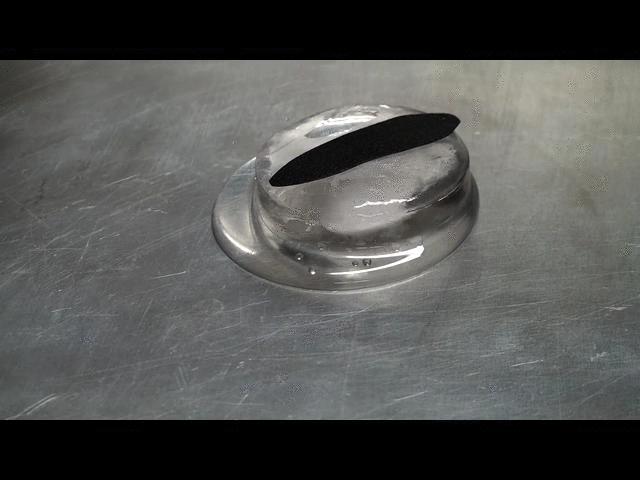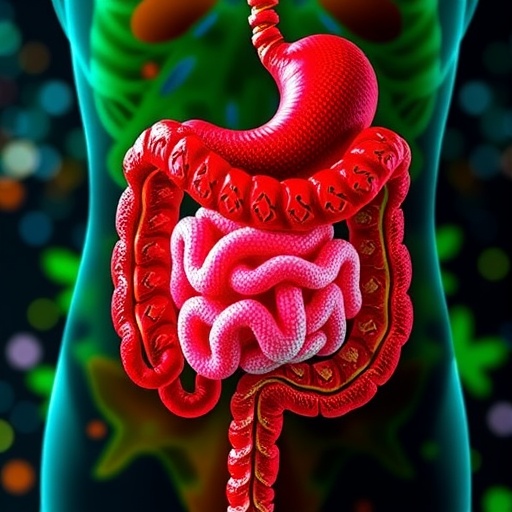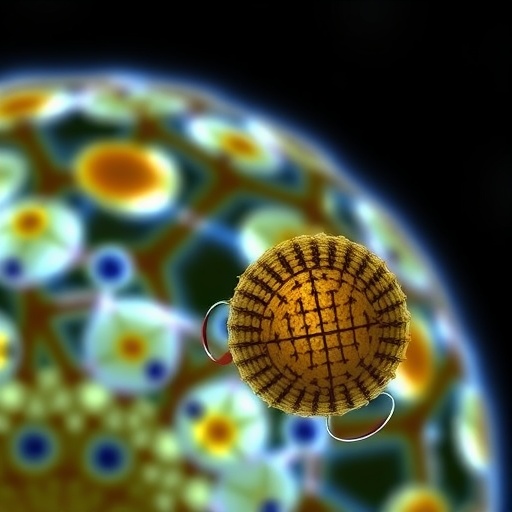
Credit: S. Dorbolo/University of Liege
WASHINGTON, D.C., December 7, 2016 — Resembling the Leidenfrost effect seen in rapidly boiling water droplets, a disk of ice becomes highly mobile due to a levitating layer of water between it and the smooth surface on which it rests and melts. The otherwise random rotation and translation (sliding) of the ice block can be directed by controlling the flow dynamics of the melted ice-turned-water close to the disk surface.
While attempting to prepare an experiment to study the adhesion properties of ice, Stéphane Dorbolo, a FNRS senior researcher in physics hosted by the Université de Liège in Belgium, dropped a petri dish-shaped block of ice onto the smooth, concrete floor. Its unusual motion, acquiring seemingly random rotation as it moved across the floor, prompted Dorbolo to investigate further, where his eventual results about ice levitation are published in this week's journal Physics of Fluids, by AIP publishing.
"The story was completely different because of this accident," said Dorbolo. "The question was, why does it move? Because actually, it's very common procedure: you have an ice block and then it melts. But it doesn't happen, for example, on a plastic plate. It only happens on very flat stone, or on a metal plate. That was the start."
The contact area is much smaller on a skating rink, between a skate blade edge and ice , but it's for the same reason that ice-skate blade edges must be smooth and typically metallic, in hockey and figure skating, where smooth motion is pivotal.
The key area of interest in this investigation was the melting interface, where the surface supporting an ice disk – be it smooth and non-porous stone, metal or even a pool of water – supplies relative heat and rapidly melts the ice.
Dorbolo and his team previously studied the dynamics of such an ice disk melting while resting on the liquid surface of water. These motions of the ice are governed by different interactions than if the ice rested on a solid surface, but the investigations proved as a simpler, initial step and gave insight into the dynamics of how the newly melted water flows from the ice.
"The main idea was to study the ice disk melting on a plate, but we started by studying the ice disk on a bath," said Dorbolo. "Actually, when we came back to the melting of the ice disk on a plate we discovered a completely different mechanism."
The effect resembles the Leidenfrost effect, the focus of numerous YouTube videos featuring water droplets "walking" and "dancing" as they float over smooth surfaces hot enough to rapidly boil the underside of the droplets. The rapid boiling produces a levitating cushion of vapor (steam) between the droplet and heating surface, increasing the droplet mobility.
"It means you must have a thermal reservoir, like the stone or metallic plate, to melt the ice fast enough," Dorbolo said. "So the melting flow rate is important. If it's not sufficient, you don't have this lubricating film between the disk and the plate and it cannot move. That's why we said that it was similar the Leidenfrost effect."
Dorbolo carefully pointed out that the levitating liquid cushion of their ice disks was not exactly analogous to the floating effect felt by the Leidenfrost droplets, though their interest in controlling the motion was one held common to many droplet experiments.
The solid-liquid-solid configuration of this phenomena, as opposed to that of solid-gas-liquid in the case of the droplets, led the team to focus on water outflow from the continuously melting ice to investigate control of the disk motion.
"You have a disk and it must melt fast enough to have this lubrication film between the disk and the plate, and then because of this lubrication, the ice disk is very mobile. So if you don't control the melting, you will see the ice block move," Dorbolo said
If you do control the melting, or more specifically the flow of the melted ice near the disk, the team showed that the final spinning and sliding motion of the ice disks could be sustained and directed.
This control was achieved, essentially, in the form of a small hole Dorbolo's team made in the surface of the metal plate, near the floating ice. The hole lead to an exit pipe, acting as a reservoir through which the water continuously escaped after melting on the thermalized metal. To further contain the water flow, the team also used careful placement of petroleum jelly on the plate.
They tracked the motion of a given petri dish-formed ice-disk using a black ellipse frozen on top the ice, imaged by a camera during the experiment. The contrast and asymmetrical shape allowed for precise monitoring of both linear and rotational motion of the disks which Dorbolo's group then analyzed in relation to other data, such as temperature and flow rates.
Their findings offer insight into the precise mechanisms of the motion and what factors drive motions – such as the thickness of the water layer or the direction of the circular flow around the disk edge. The scientists also highlight how the liquid effects compare to the analogous vapor effects on droplets in the more widely studied Leidenfrost effect.
Although the project diverges from Dorbolo's primary research goal, he acknowledges many possible ways the study could be further pursued, whether by changing the shape of the ice or the plate surface structure to effect flow dynamics. He also confidently said, "People will have ideas."
###
About the journal:
Physics of Fluids is devoted to the publication of original theoretical, computational, and experimental contributions to the dynamics of gases, liquids, and complex or multiphase fluids.
Media Contact
AIP Media
[email protected]
301-209-3090
@jasonbardi
http://www.aip.org
############
Story Source: Materials provided by Scienmag





